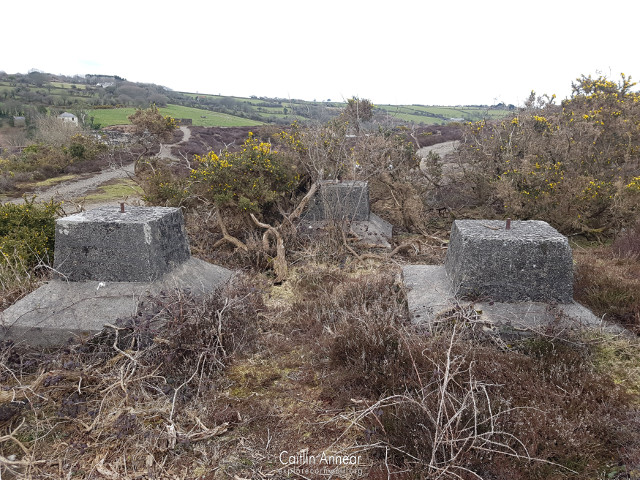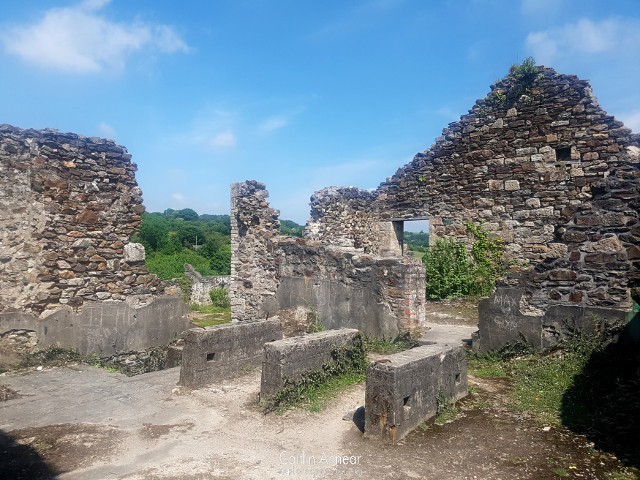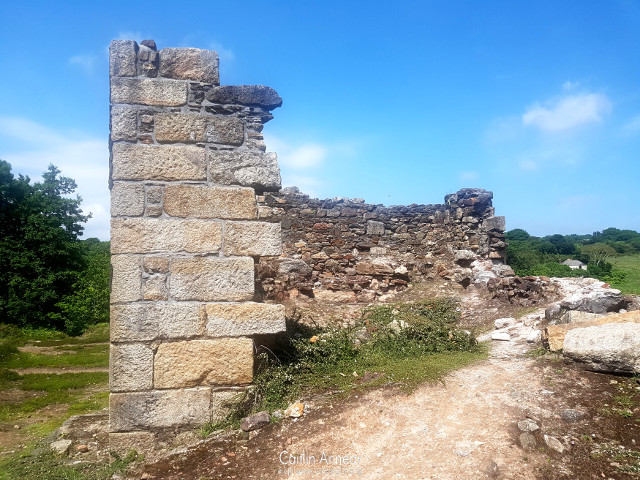In the Poldice Valley on the outskirts of St Day and Carharrack are the remains of a once very significant mine in Cornish history.

First officially mentioned in 1512 during a legal dispute, the site itself is ancient with permission for stamping water courses being granted as far back as the reign of Queen Elizabeth. By 1702 the mine had already reached 100 fathoms and used ‘engines’ to help dewater the mine, although these were probably water wheels. Two Newcomen engines were added to the mine to aid dewatering in 1941, with work then starting on the Great County Adit in 1748.
On the 8th of July 1786, Boulton and Watt sent the mine manager of Poldice, expressing concern over their state of affairs and whether or not they could pay the money owed for the engines they had just erected. The 11th of July saw another letter sent, this time giving some discount on the monthly payments for the engines (£110 rather than £166)
In 1800, Poldice amalgamated with its neighbour Wheal Unity, raising 41,196 tons of copper worth £41,441 before closing. It reopened a couple of years later. 1821 saw the erection of a 90-inch Woolf pumping engine on Bissa Pool shaft. This engine came from Wales in the middle of a storm, with the boat having to land in Padstow rather than Hayle, while some other components were left in Wales only days before it was due to start working.

In 1852, Poldice amalgamated with Wheal Unity, Wheal Maiden, Wheal Gorland and Carharrack Mine to form St Day United. One record shows that nine engines of different varieties were working during this period, with work started on a man engine in 1865, however, this was never finished before the mine closed again in 1866/67.
The mine reopened in 1870 as Poldice Mine, but only worked for a couple of years before closing and selling the engines. 1873 saw another reworking as St Day United with the purchase of another large 85-inch engine, but this only lasted six months before it folded. By 1880 only West Poldice (Unity Wood) was still in action, although one of the calciners is dated 1883 and another 1897. All of the remaining engines were all bought for £12,000 in the early 1900’s by J. C. Lanyon & Son and scrapped along with those from Clifford Amalgamated. Between 1924 and 1929, the dumps were reworked for tin, copper and arsenic but with little success.

From 1926-29 another mine, Park-an-Chy, about a mile to the NE started to transfer its ore to Poldice for dressing as it was unable to rustle up enough water for dressing on its own site. It did this via an overhead cable that landed just above the dressing floor remains. Park-an-Chy was attempting to mine both tin and wolfram, which require different processing methods (fine and coarse crushing respectively) and eventually this proved too difficult and the venture stopped.
During the 1970’s, the dumps of Poldice were reworked again for the last time, this time by Mount Wellington, along with the rest of the Consol’s area.
To go along with its long history, there are more shafts than you can shake a stick at. What makes sorting these all out really helpful is that every source contradicts the other. There are likely over 100 shafts in total.
Trussel’s (162 fathoms/296m), Trussel’s South (162 fathoms/296m), Trezise (134 fathoms/245m), Oppy’s (205 fathoms/375m), Bissa Pool (162 fathoms/296m), Sir Frederick’s (60 fathoms/110m), Todpool (114 fathoms/208m), Richard’s (153 fathoms/280m), Kitty Billing’s (148 fathoms/271m), Quick’s (128 fathoms/234m), Mundic (104 fathoms/190m), Roger’s (128 fathoms/234m) and Painter’s (134 fathoms/245m).
Tin, Main Copper/Bissa Pool/Tresize, North, Mundic, Field’s, Quarry, Tower Engine and Trevivian’s.
1815-49
108,698 tons (110,442,267 kg) of 6.25% copper
1837-39 and 1852
1,525 tons (1,549,472 kg) of black tin
12 tons (12,193 kg) of zinc, 1,822 tons of mispickel, 873 tons (1,851,237 kg) of arsenic, 51 tons (51,818 kg) of pyrite and 321 tons (326,151 kg) of ochre.

Concrete remains from the overgrown Bissa Pool stamps
Over it’s life Poldice had a large number of engine houses, although not at the same time. Prior to 1741 it utilised waterwheels to unwater the mine until the installation of two Newcomen engines in that year. By 1777 there were four of these engines, two of which were sized at 66″ and 60″. Three 63″ Boulton & Watt pumping engines were erected in 1780, 1782 and 1785, one of which was replaced in 1787 by a 58″ double acting engine. In 1821 the enormous 90″ pumping engine was installed on Bissa Pool shaft, with two smaller engines elsewhere. A whim was added in 1843 along with a man engine on Paynter’s shaft in 1865. The final installation was a 85″ pumping engine from Perran Foundry in 1873.
The whole site is on open access land and you’re free to explore what’s left of the buildings. Some of the shafts have been capped at one point or another but the majority are fenced off, so I can’t recommend climbing the fences and jumping around on them.
There is a very small car park just off the road.
Acton, B. (1990) The Landfall Book of the Poldice Valley. Truro: Landfall Publications.
Acton, B. (2000) Exploring Cornwall’s Tramway Trails: Volume 2. Truro: Landfall Publications.
Cornwall Archaeological Unit (1996) ‘An Archaeological Assessment for Site Investigations and Shaft Treatment in the Poldice Valley’. Available at: http://map.cornwall.gov.uk/reports_event_record/1996/1996R038.pdf (Accessed: 25 May 2018).
Dines, H. G. (1956) The metalliferous mining regions of south-west England. British Geological Survey.
Nance, D. and Brown, K. (2014) A complete guide to the engine houses of West Cornwall. Gloucestershire: Lightmoor Press.











